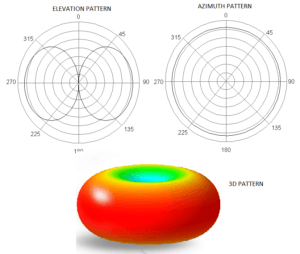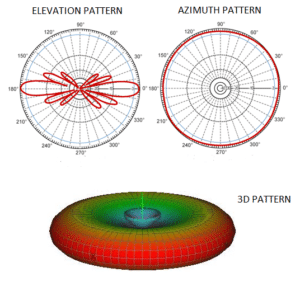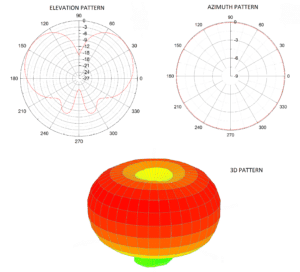Omnidirectional Antenna Radiation Patterns of Different Antenna Designs
Which antenna is right for my deployment???
Antenna selection is by far the most commonly overseen task in designing a system or deployment. Why? Because antennas are boring… they are passive devices that offer zero analytics and no nifty software. They simply plug-in to sophisticated active devices, and take a back seat while the radio gets all of the credit. However, without the RIGHT antenna, or an antenna at all, your fancy software on your fancy radio will not work. Your devices will not connect, you won’t be able to provide your customers the service they need, and most likely someone will be complaining. Antenna selection does not have to be a daunting task. The number one issue that we have seen over the years falls under the category of radiation pattern selection, specifically when it comes to Omnidirectional Antennas. Lets look at a few radiation patterns and discuss where they work best.

Omnidirectional Dipole Antennas
These Omnidirectional antennas have a doughnut shaped radiation pattern and are ideal for connecting devices that are on the same plane and to either side of each other. These are commonly misused in in-building and mobile applications. In mobile applications, Omnidirectional Dipole Antennas fail to have the proper patterning needed in order to connect to a tower that is on a much higher elevation. In in-building applications, Omnidirectional Dipole Antennas fail specifically in point to multipoint deployments where the user can be standing directly underneath a transmitting antenna, and be in a dead zone.

Omni Directional HIGH GAIN Dipole
These are very similar to the Omni Directional Dipole, however, the gain is increased which in turn, reduces the beamwidth.
Again, these are ideal when a further reach is needed, but only when the transmit and receive antennas are on the same plane. When installed on a tower, high gain omni antennas typically to provide coverage outward and not underneath the tower. If coverage is needed closer to the tower, antenna height and electrical downtilt can address issues.

Hemispheric Antennas and Omnidirectional Radiation Pattern
These Omnidirectional antennas are ideal for indoor deployments and mobile applications. When mounted with the radome facing up in a mobile application, as shown in the plot below, the radiation pattern is directed above the antenna making it possible to transmit and receive signals from antennas that are at higher elevations. When mounted with the radome facing down in an in-building application, a hemispheric Omnidirectional antenna offers less of a dip in its pattern when standing directly underneath the antenna and ultimately reduces the possibility for dead spots.
MP Antenna, LTD. (https://www.mpantenna.com) is the exclusive developer and manufacturer of advanced Multi-Polarized antennas that are well-suited for a range of applications including public safety, wireless broadband systems, WiFi, WiMax, video monitoring systems, 3G, CDMA, GSM, PCS and LTE. The company’s product line improves signal penetration and connectivity in obstructed deployments providing increased data throughput, enhanced voice clarity and multi-path mitigation. MP Antenna’s products are protected under numerous US patents with many US and foreign patents pending. MP Antenna is privately held and designs and manufactures its products at their headquarters located near Cleveland, Ohio, USA.
